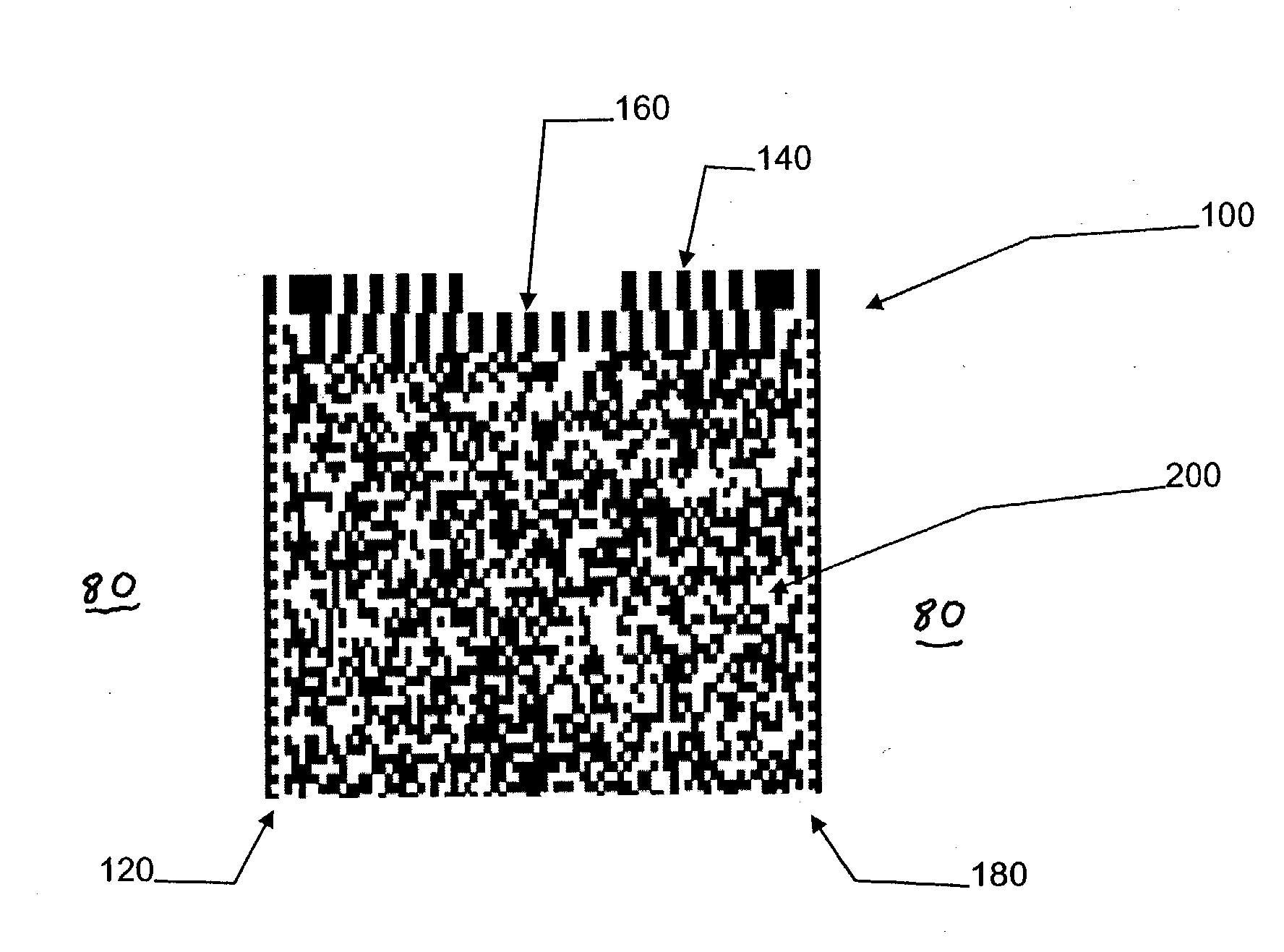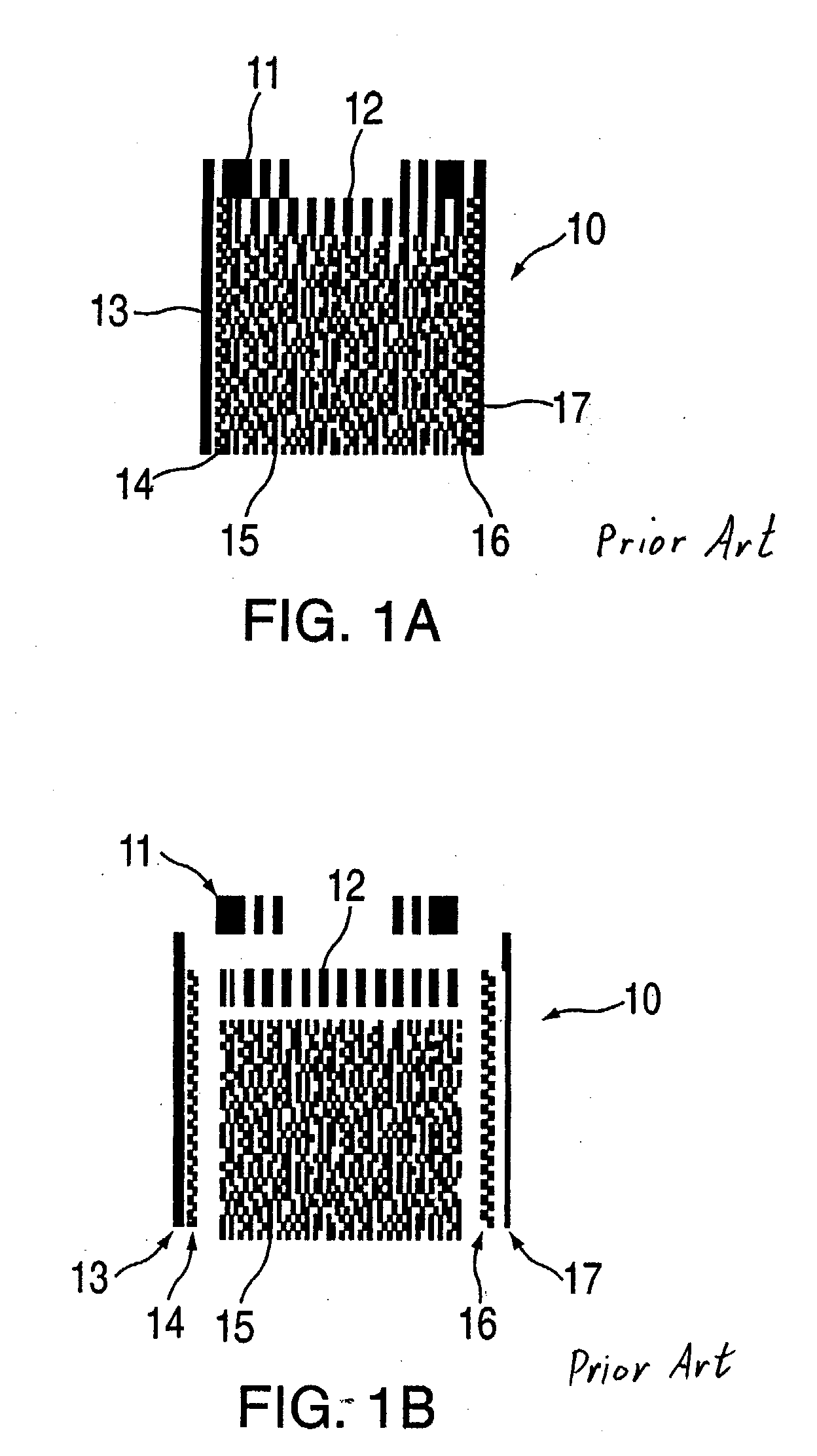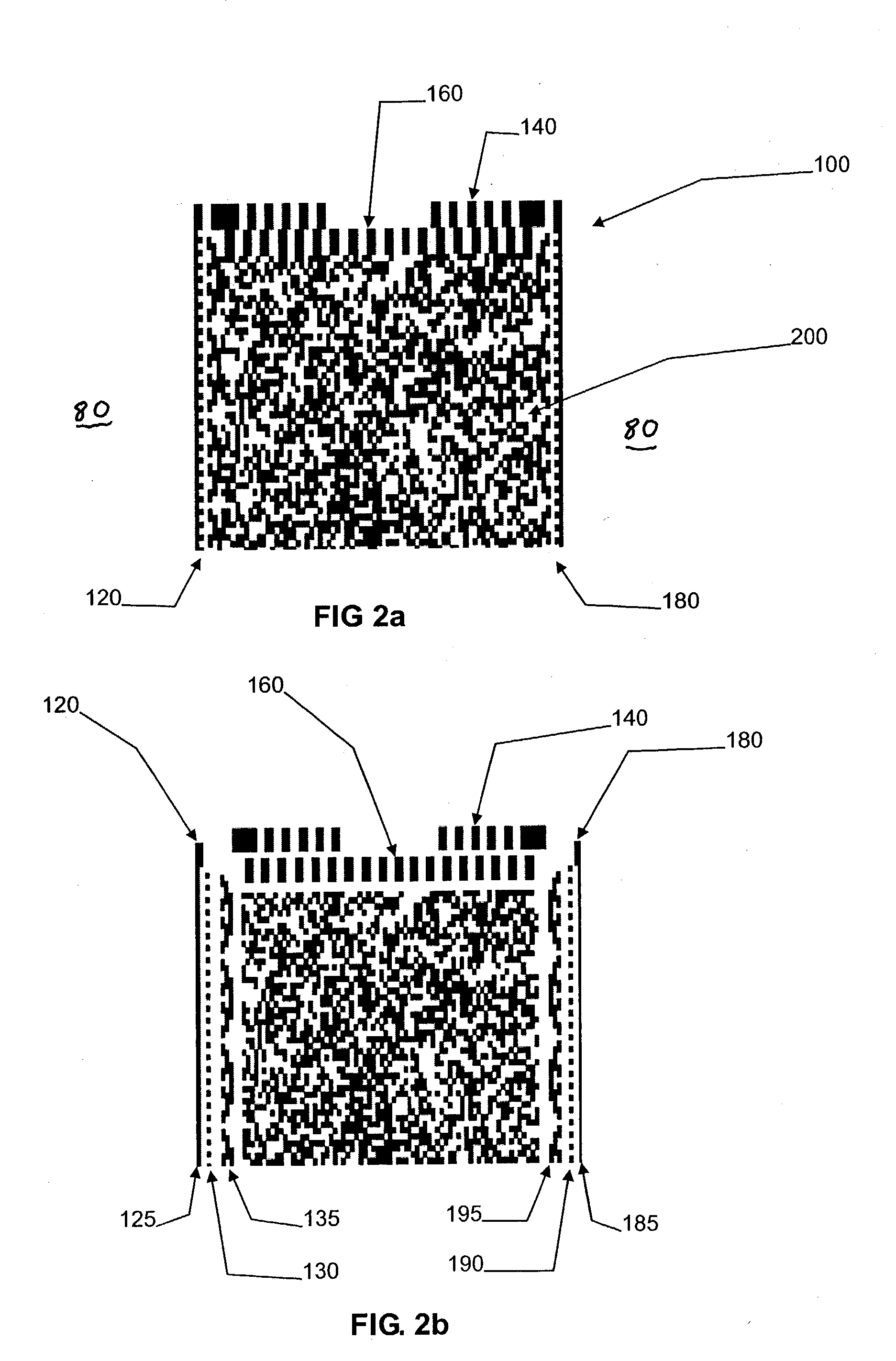Two-dimensional printed code for storing biometric information and integrated offline apparatus for reading same
a biometric information and two-dimensional printing technology, applied in the field of high-density printed codes, can solve the problems of limiting the suitability of the card for low-cost applications, implementing a (n, k) bar code encoding methodology, and substantial overhead (redundant portion of the code), so as to improve the total information capacity, improve the performance of high information density, and improve the effect of high information capacity
- Summary
- Abstract
- Description
- Claims
- Application Information
AI Technical Summary
Benefits of technology
Problems solved by technology
Method used
Image
Examples
Embodiment Construction
A. Background
[0055] The invention concerns in part a two-dimensional printed bar code or matrix code wherein the same user message can be printed in codes that vary in density. The fundamental unit for encoding information is called a “bit area,” which may be printed or blank. Information may be encoded using various encoding methodologies well known in the art including (n, k) bar codes; dibit codes; other run-length-limited codes; and direct binary encoding.
[0056] The two-dimensional, high-density, damage tolerant printed code of the invention is an improvement over the data strip printed code disclosed in U.S. Pat. No. 4,782,221, and made reference to in U.S. Pat. No. 4,692,603. These two patents are hereby incorporated by reference in their entirety.
[0057] The structure of the prior data strip 10 is depicted in FIGS. 1A-B, and comprises a horizontal header section 11; a vertical header section 12; a left guide bar 13; a rack 14; an encoded data portion 15; a checkerboard 16; a...
PUM
 Login to View More
Login to View More Abstract
Description
Claims
Application Information
 Login to View More
Login to View More - R&D
- Intellectual Property
- Life Sciences
- Materials
- Tech Scout
- Unparalleled Data Quality
- Higher Quality Content
- 60% Fewer Hallucinations
Browse by: Latest US Patents, China's latest patents, Technical Efficacy Thesaurus, Application Domain, Technology Topic, Popular Technical Reports.
© 2025 PatSnap. All rights reserved.Legal|Privacy policy|Modern Slavery Act Transparency Statement|Sitemap|About US| Contact US: help@patsnap.com



